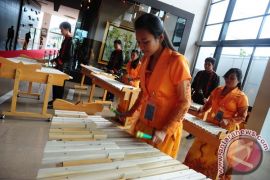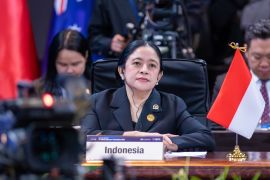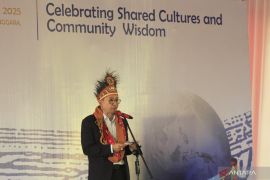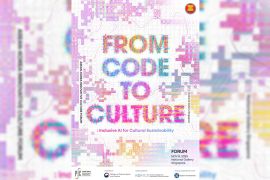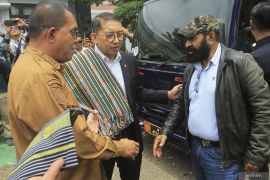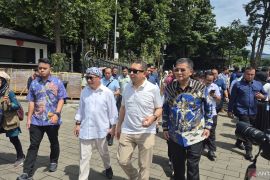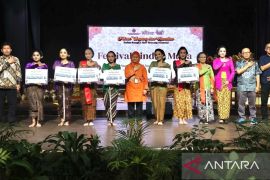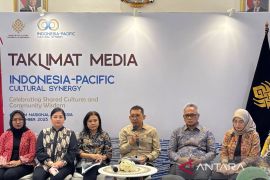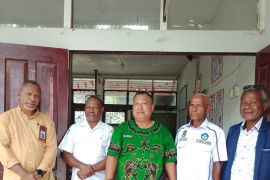Indonesia has a wealth of cultural diversity. This country, with mega-cultural diversity, has an extraordinary treasure trove of traditional music. However, traditional music today faces tough challenges.
Challenges in the current era of information technology are quite different from those in previous decades.
Musicians not only face the challenges of piracy and song royalties but also the development of digital platforms that have dominated the market chain and directed public perception of music as a whole.
The current young generation -- Gen Millennials, Z, and Alpha -- are more active in surfing digital music platforms such as Spotify, YouTube, and TikTok.
Various countries, such as South Korea, the United States, European countries, and China, have actively encouraged cultural expansion through music and also by utilizing digital platforms. Traditional music no longer gets special attention.
According to the Ministry of Education and Culture, traditional music is deeply rooted in the traditions of a particular society.
The preservation of traditional music faces major challenges.
Special affirmative steps are deemed crucial to strengthen the preservation of traditional music not only in the form of performances but also in education from an early age.
The Indonesian government continues to strive to promote traditional music as a regional and national cultural heritage by including it on the list of World Intangible Cultural Heritage (ICH) from the United Nations for Education, Scientific and Cultural Organization (UNESCO). Two traditional Indonesian musical instruments -- Gamelan (2021) and Angklung (2010) -- have been included on the list of UNESCO ICH.
In 2024, efforts continue to be made to include the Kolintang musical instrument on UNESCO's Representative List of ICH. The typical musical instrument of Minahasa, North Sulawesi, is not only known in Minahasa but also across Indonesia and abroad.
In the past, Kolintang music was played during traditional ritual ceremonies related to the worship of ancestral spirits, but over time, it has become more of an accompaniment to dances, a complement to songs and musical performances in various events such as traditional ceremonies, parties, and thanksgiving as well as for welcoming guests.
Kolintang comes from the word "tong" for low notes, "ting" for high notes, and "tang" for middle notes. In the past, the Minahasa people called the kolintang game "Maimo Kumolintang" which was later more popularly called Kolintang.
The Kolintang musical instrument consists of wooden bars arranged in rows and mounted on a wooden tub. The wood used is generally the local variety that is light and strong and has a parallel fiber construction. The kolintang musical instrument is generally played together or in an ensemble. The musical instrument has been recognized as a national intangible cultural heritage since 2013.
The submission of Kolintang to UNESCO is one of the efforts to preserve the musical instrument.
Kolintang was submitted along with Balafor, a musical instrument from Africa, with an extension pattern with African countries, namely Burkina Faso, Mali, and Ivory Coast. Indonesia took this pattern, as the two musical instruments have many similarities in terms of function in the cultural order and ethnomusic group.
Several efforts have been made by the government and the community. Various Ministries/Institutions (K/L) actively present kolintang ensembles at every official event.
Likewise, other stakeholders are actively campaigning for Kolintang, one of which is the National Kolintang People's Association (PINKAN) Indonesia, a community organization that is active in promoting the musical instrument.
The publication of the book "Kolintang: The Sound of Heaven" by Luddy Wullur and Lidya Katuuk, which was supported by the organization in October 2024, is a step that deserves appreciation.
This is a form of real support to strengthen Indonesia's cultural diplomacy steps while strengthening the narrative and literacy about kolintang.
Preservation of the kolintang musical instrument must continue to be strengthened as mandated by Law No. 5 of 2017 concerning the Advancement of Culture.
Involvement of the younger generation is direly needed to strengthen the advancement of kolintang, for example, collaboration with other traditional musical instruments, such as sampek, rebab, gamelan, kecapi, angklung, tifa, and sasando, or modern musical instruments with pop, jazz, rock, and other music genres.
One aspect that should be considered is how formal and informal education and training about kolintang from an early age can be carried out continuously. Likewise, the implementation of various traditional music festivals in Indonesia should involve all relevant stakeholders so they are more inclusive.
On the other hand, knowledge about wood as the basic material for making kolintang can be a valuable reference about the need for the preservation of wood plants, such as egg wood (Alstonia spp.), wenuang (Octomeles sumatrana Miq.), cempaka (Elmerrillia tsiampacca, syn. Magnolia tsiampacca), and waru (Hibiscus tiliaceus).
Understanding related to the preservation of wood plants is in line with the principle of sustainable development, namely the balance between economy, ecology, and socio-culture.
The preservation and advancement of traditional Indonesian music, such as kolintang, must go hand in hand as a safety valve for national cultural identity and character. (INE)
*Andre Notohamijoyo is the Assistance Deputy of Regional Development Equalization, Coordinating Ministry of Human Development and Cultural Affairs.
The views and opinions expressed on this page are those of the author and do not necessarily reflect the official policy or position of ANTARA News Agency. Related news: Indonesia seeks to inscribe kolintang on UNESCO's world heritage list
Related news: Indonesia promotes kolintang, wants it in world heritage list
Copyright © ANTARA 2024

